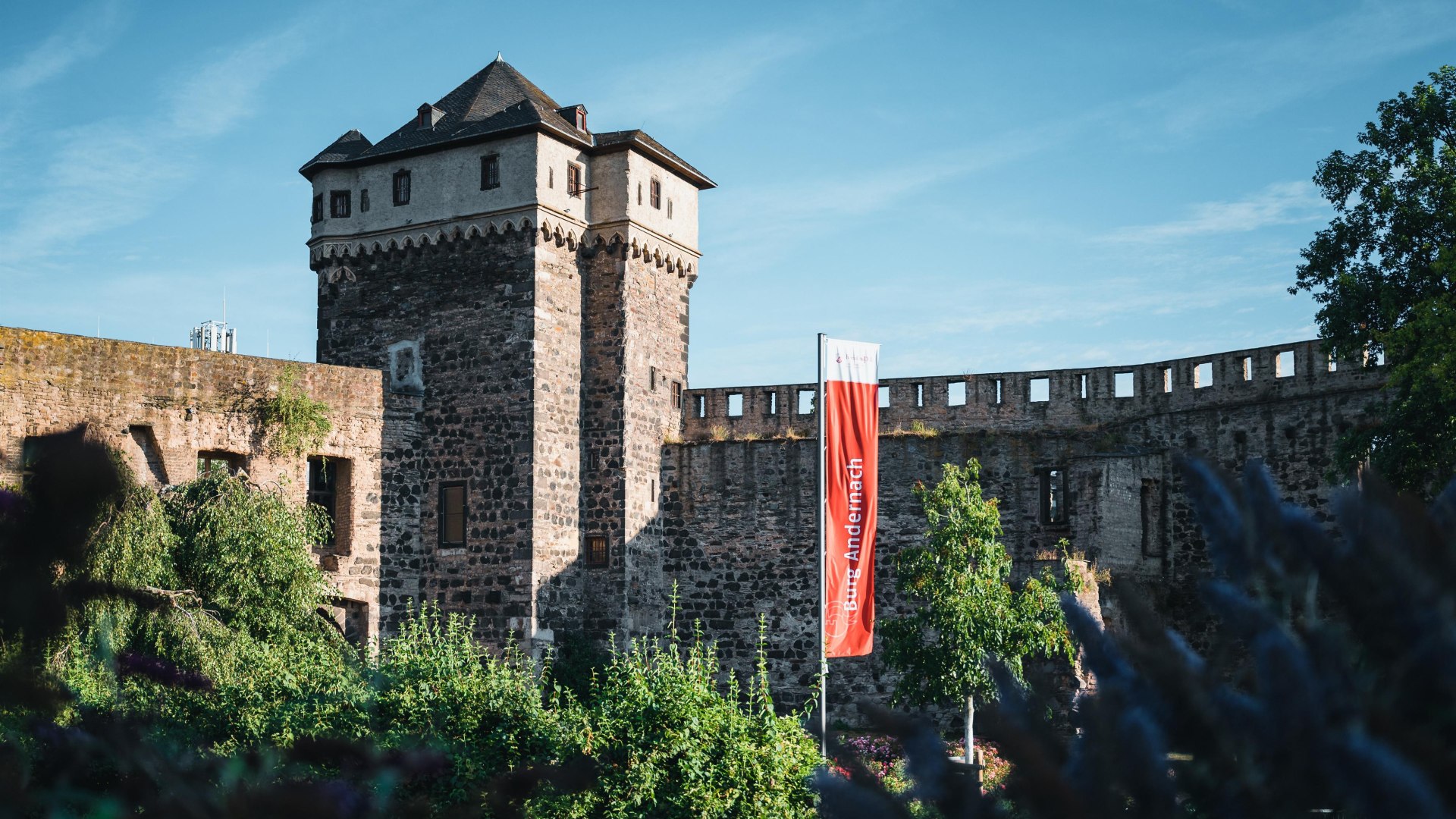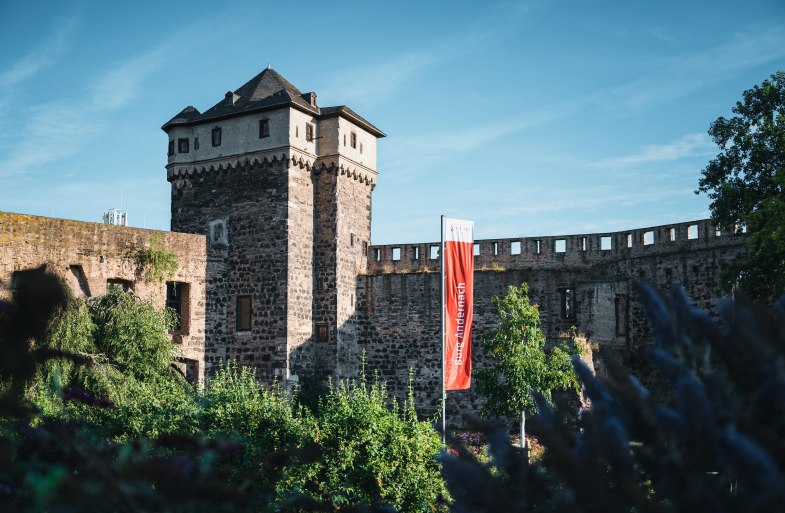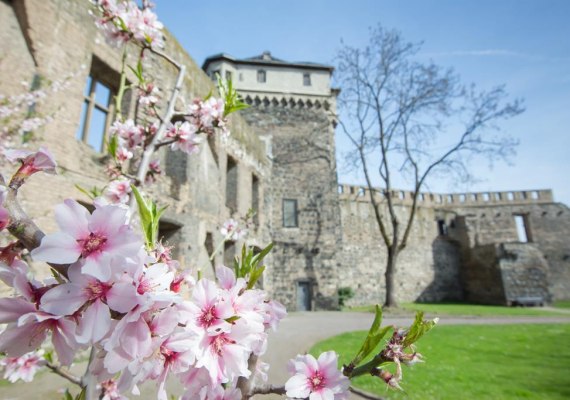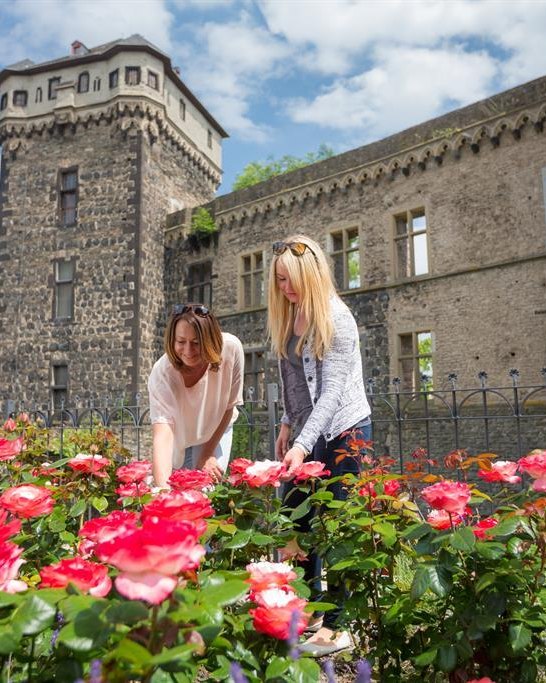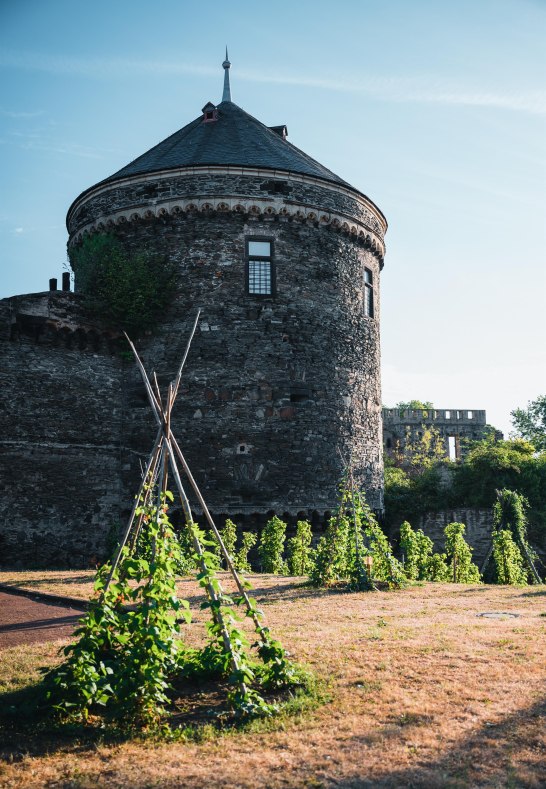Burgruine mit Schlossgarten
Hochstraße / Stadtgraben, 56626 Andernach
Construction of the castle of the Electorate of Cologne began around 1200. It was destroyed by the French in 1689 during the Palatinate War of Succession. The cannonballs, which were piled up to form a pyramid in the castle garden, date from the time of the Thirty Years' War. The town castle is one of the best preserved ruins on the Middle Rhine. The baker's boy festival and the medieval scoundrel market are held regularly against the backdrop of the castle ruins.
Translated with www.DeepL.com/Translator (free version)
On the one hand, it strengthened the defence power of the city on the outside and, on the other, secured the sovereignty of the Archbishopric over the city against insurgent citizens. It did not always succeed in the latter, however: in 1359 and again in 1365, a “Storm on the citadel” raged as the citizens occupied and took over the complex. During the Thirty Years’ War, there was an invasion of Swedish troops here before the electoral castle was finally destroyed in the Palatine War of Succession in 1689. The top floor of the keep is now used as a romantic wedding chamber. And there is a special feature growing in the shadows of the Castle walls: fruit and vegetable beds run all around the Castle. The garden belongs to the town and therefore to all citizens. Picking is expressly allowed here. This idea gave Andernach the appendage, “the edible city”.

